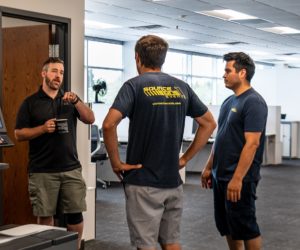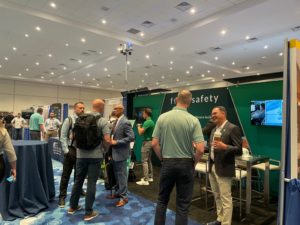 Communication is important in all aspects of life and business. This can be particularly important in the business of trade shows!
Communication is important in all aspects of life and business. This can be particularly important in the business of trade shows!
Trade shows come with pages upon pages of show information, which quite honestly, can be overwhelming. There are the general show information pages, payment pages, furniture options, union rules, material handling information, and the list goes on.
But once you have sorted through the information, what do you do with it? Many times the person who receives the show’s information places their orders, perhaps arranges the freight to and from the show, and lets it go at that. Everything is settled and done, right?
 Unfortunately, not always, because sometimes the one who completes the orders does not attend the show. Those sales representatives who attend often do not have the information they need to ensure that everything ordered is delivered.
Unfortunately, not always, because sometimes the one who completes the orders does not attend the show. Those sales representatives who attend often do not have the information they need to ensure that everything ordered is delivered.
Many times, the onsite representatives don’t know that additional furniture was ordered and find that the booth is cluttered with extra tables and chairs. Or they thought power was ordered only to find out it was not, or at the end of the event they have no idea how the freight will be sent back to their warehouse or the next event.

This is where communication is key. It is important to pass the show order information on to the onsite representatives. Send them copies of the order confirmations, and maybe even consult with them about what they really need in the booth to be successful. Provide tracking numbers for boxes that were shipped, along with the address they were shipped to! Also, provide the outbound paperwork to them. Have the freight BOL or the UPS/FedEx labels printed and packed into the materials or given to them before they head out.
The outbound paperwork can create headaches for the onsite representatives. Clear instruction for who is picking up, where it is going, and who is paying is important, especially to a representative who has been working the show floor for two or three days and now just wants to go home!
Last-minute panic calls about what was ordered, or who is shipping what to where can be avoided with simple communication. Let the onsite personnel know what is going on. The more information they have upfront, the easier it will be for them to do what they do best, sell.
 By: Dan Weitendorf
By: Dan Weitendorf